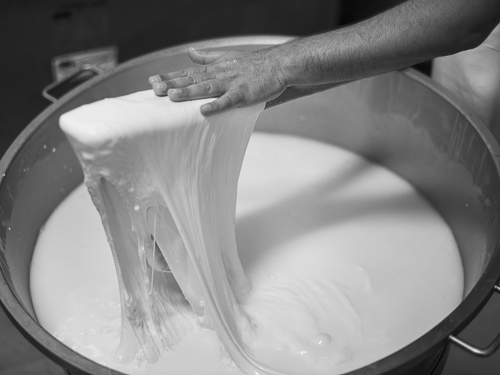
I have already been to this farm twice, as described here and here.
Since many activities occur at this farm, it’s necessary to return several times at various times of the year in order to have at least a partial knowledge of the various phases of work and the activities occurring at this farm. This time, it started with watching what happens from when he cows are milked till the milk is turned into various types of cheese. As the other times I’ve been there, the Rustici family have always been very accommodating regarding showing us how they raise their animals, cows and pigs, how they are growing a wide variety of vegetables and how they make cheese.
This time, we could watch the big Friesian cows being milked. Twice a day, at 5 in the morning and 12 hours later, the cows are ready to be milked. First, the cows are queuing in a corridor outside the room where they are going to be milked. Next, a worker opens a door, letting a group of cows enter one side of the room and, when it’s full, another group enters the other side. Finally, the worker closes the door such the other cows just have to wait.
Next, the teats of each cow is washed with a detergent and milking cups are attached to each of them. The milking cups are connected to pumps, which bring the milk to a refrigerated container. At the same time, a computer, with the aid of some sensors, identify each cow and controls the pump in accordance with the capacity of each animal. That is, one cow may require 2 minutes to be milked, while another one may require 3 minutes. Moreover, another sensor measures the activity of each cow’s legs. If they are moving a lot, the cow may be ready for artificial insemination. The computer also records the quantity of milk each cow delivers during its whole life, making it possible to monitor various parameters of the cattle daily over a long time.
The next day we could watch how the milk was turned into dairy products in the farmhouse dairy located a sort distance from the cows. Upon arrival, the dairy workers had already finished making cheese and they were busy producing ricottta meaning recooked in Italian because the milk is cooked twice, the first time for making cheese and the second one for making ricotta. In each case, the milk is heated in a stainless steel container having double walls inside of which tubes let hot water flow freely, heating the remaining whey indirectly to about 38-40°C. We could watch white flakes of curd appearing on the surface of the whey. When there was enough curd on the surface, a dairy worker used a sieve with a handle to lift it up and put it in a perforated plastic basket, letting the remaining whey flow out and letting the ricotta remain.
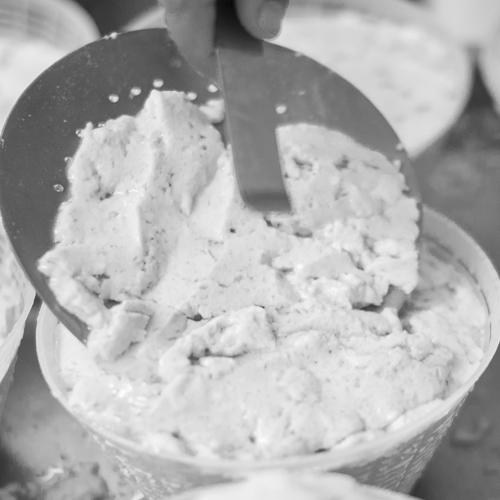
Next, this procedure was done repeatedly, putting each layer on top of the former one. When one porous basket was full, another one was filled. All the baskets were put on an inclining work table with a hole at the lower end through which the whey could flow through a hose to a container. When the container was full, its contents were pumped into a container on the outside of the building. Next, the whey would be given to the pigs as supplementary feed.
Actually, the dairy workers had started making cheese early in the morning and one of the dairy workers turned perforated plastic cylinders upside down occasionally in order to let the whey escape.
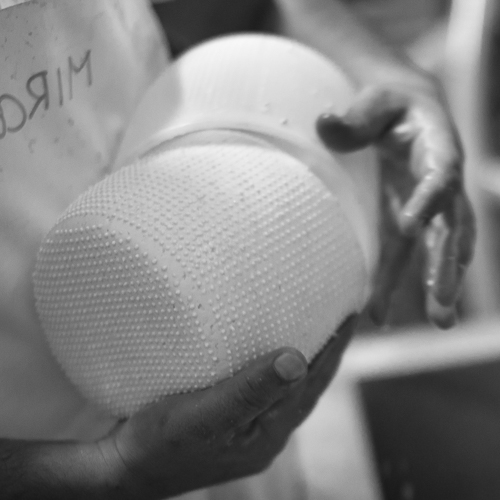
Unbeknown to us, the dairy workers had prepared another container seemingly only containing whey, but in reality containing a large amount of curd below the surface. While one dairy worker was making ricotta, another one took a small amount of curd, formed it into a small ball and compressed it, pressing out the whey. Next, he put a pH sensor inside the ball and when it was 5.0, the curd was ready to be extracted and kneaded. After having pumped out the whey into the container on the outside, he cut loose a large part of the curd with a knife, lifting up on a work table whose surface was curving slightly downwards, having a hole in the centre, and being surrounded by walls of stainless steel. There, the dairy workers started compressing and kneading the curd, getting rid of the whey, which was collected in a container below the table.
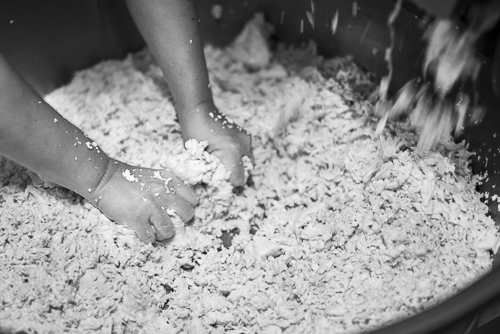
Having partially driven out the whey, the blocks of curd were transferred to a big funnel on the top of a machine. After having passed a hole at the base of the funnel, the curd was forced to enter a room where an Archimedean screw was rotating continuously, dividing the curd into small fragments. The dairy workers poured the container with the small fragments into a large bowl, kneading and compressing the fragments before another dairy worker poured water at 90°C on the curd fragments.
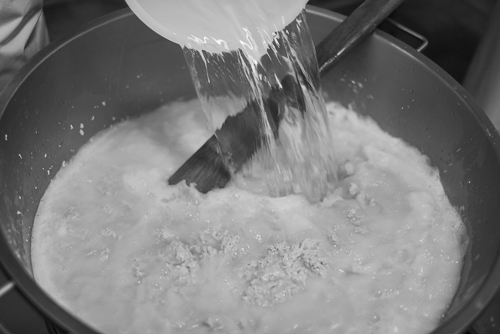
Next, he used a wooden tool, looking like an oar, to stir the mixture of hot water and curd into a compact, homogeneous and elastic paste, called pasta filata.
Next, two dairy workers carried the bowl containing the pasta filata to another machine into which they poured the contents of the bowl. There, another Archimedean screw forced the paste to enter a stainless steel roller with holes symmetrically placed across its whole surface. The rotational speed of the Archimedean screw and the roller was set to 14 revolutions per minute in order to make mozzarella shaped like small spheres called bocconcini.
At the same time, water containing some whey, called acqua di governo, where the whey is used to add softness and structure to the mozzarella cheese, was pouring continuously over the roller.
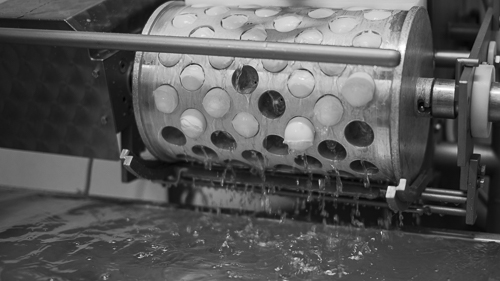
As the roller was rotating, the bocconcini fell down into a small tank containing water with whey, forming small white spheres. Finally, the bocconcini would be packaged together with some of the water in the tank.
Another type of mozzarella called fior di latte is also made at this dairy.
It was a great pleasure to visit this farm, watching able workers do their work seemingly effortlessly.
